DON’T Throw Away the Best Part of the Tomato!
Alyssa Vaughn, senior editor for COOK’S ILLUSTRATED, says that for the most flavorful tomato dishes, you might want to skip this common prep step.
The juiciness of a ripe summer tomato is part of its glory—and also its bane. These juices can flood a dish, ruining texture. That's why many recipes try to cut back on liquid by removing the tomato’s gel (seeds suspended in it).
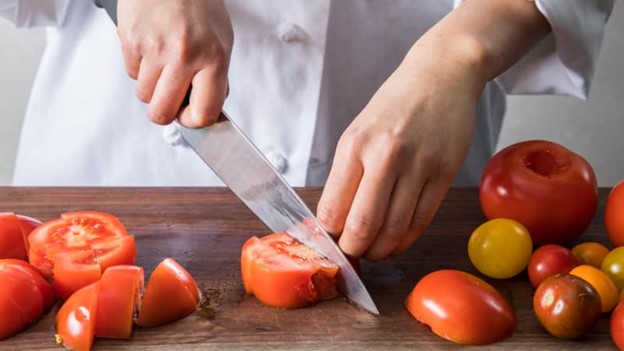
There’s just one problem: When you scoop out the gel, you're tossing the most flavorful part of your perfect tomato in the trash.
Tomato gel tastes so good because it’s packed with acids, sugars, and amino acids. Most importantly, the substance actually contains three times the amount of flavor-enhancing glutamic acid as does the fruit’s flesh. Glutamic acid is the compound responsible for the savory quality known as umami. When these glutamates are removed from the tomato, the fruit tastes flatter and less dynamic.
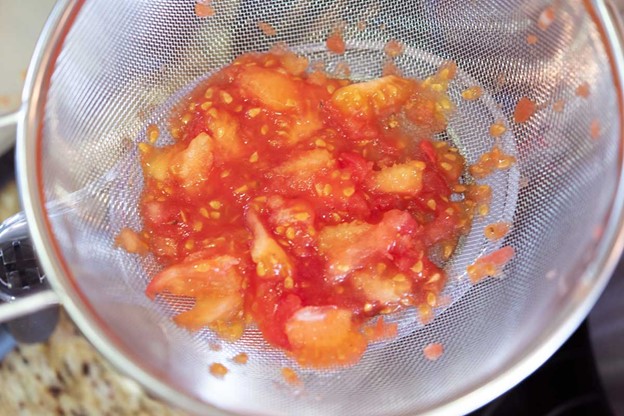
Alyssa explained that to get a better understanding of tomato gel’s impact on flavor, the researchers at America’s Test Kitchen set up a quick experiment. They prepared two summer vegetable gratins, one with intact tomatoes and another with tomatoes from which the seeds and gel had been removed.
She says the results were clear: The gratin with the intact tomatoes had a decidedly richer, deeper flavor than its stripped-down counterpart.
And for peak tomato flavor in tomato sauce, keep the skin also. Even though many recipes for homemade tomato sauce call for removing the fruit’s skins (for a smoother consistency), include it anyway. The Test Kitchen researchers found that keeping the skins, in conjunction with preserving the gel, made a significant difference, delivering fresh tomato sauce with an optimal balance of bright, savory-sweet flavors.
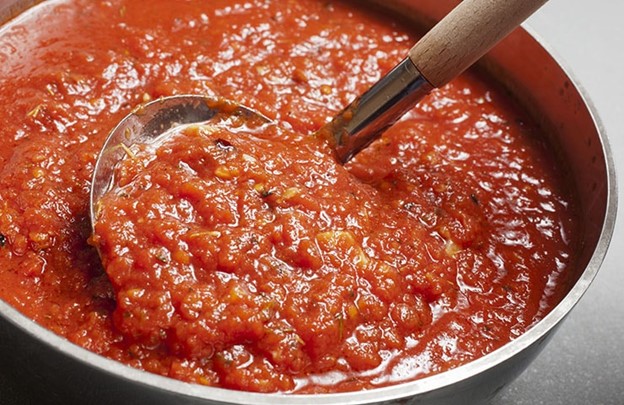
Eliminating the skins, on the other hand, led to a sauce so sweet and one dimensional that tasters likened it to “tomato candy.” That’s because the skins are full of aromatic compounds that lend complexity. (The seeds didn’t contribute any noticeable flavor, but their texture was distracting, so they were strained them out.)
To sum up, here’s a breakdown of the dominant flavor and aroma compounds in tomato flesh, skins, and gel:
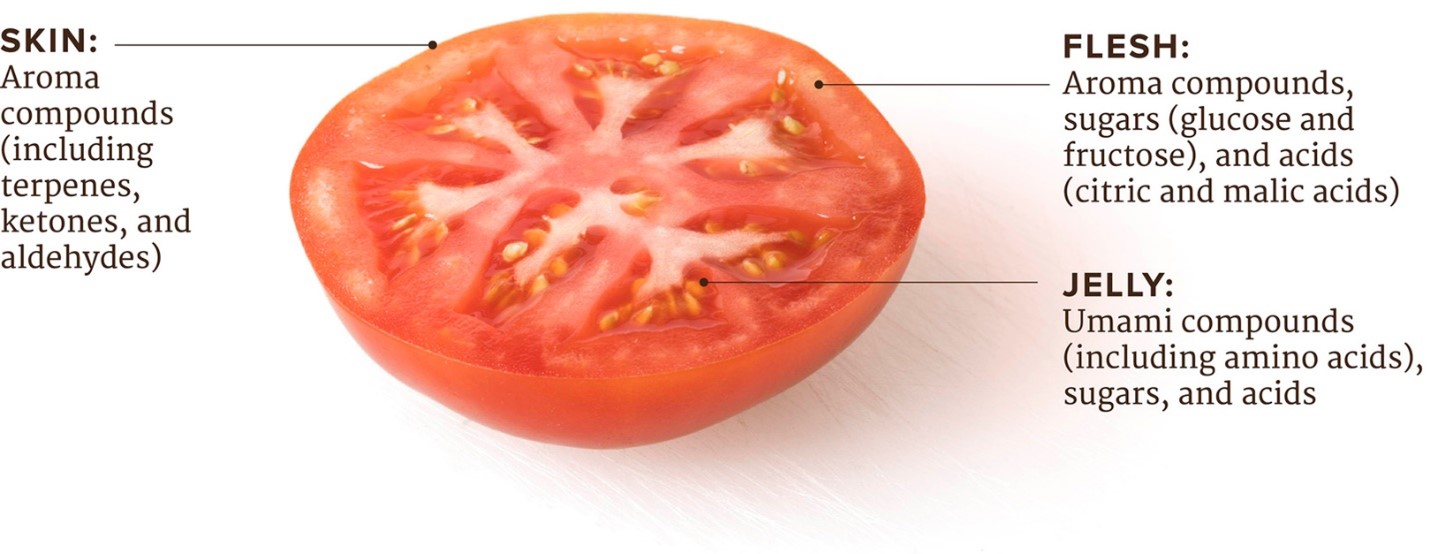
Of course, it’s not always possible to retain all of the elements of the tomato—but if your recipe can work with the extra texture and moisture the skin and gel provide, by all means, skip the extra prep step keep them in.
And if you do have to excavate that gel (to ensure the crust on your upside-down tomato tart is crisp, for example), don’t toss it: It makes for a delicious summery snack spooned over crusty bread and sprinkled with sea salt.
I’ll close with a favorite recipe from COOK’S ILLUSTRATED for a scrumptious recipe that uses all the wonderful fresh produce we can get this time of year.
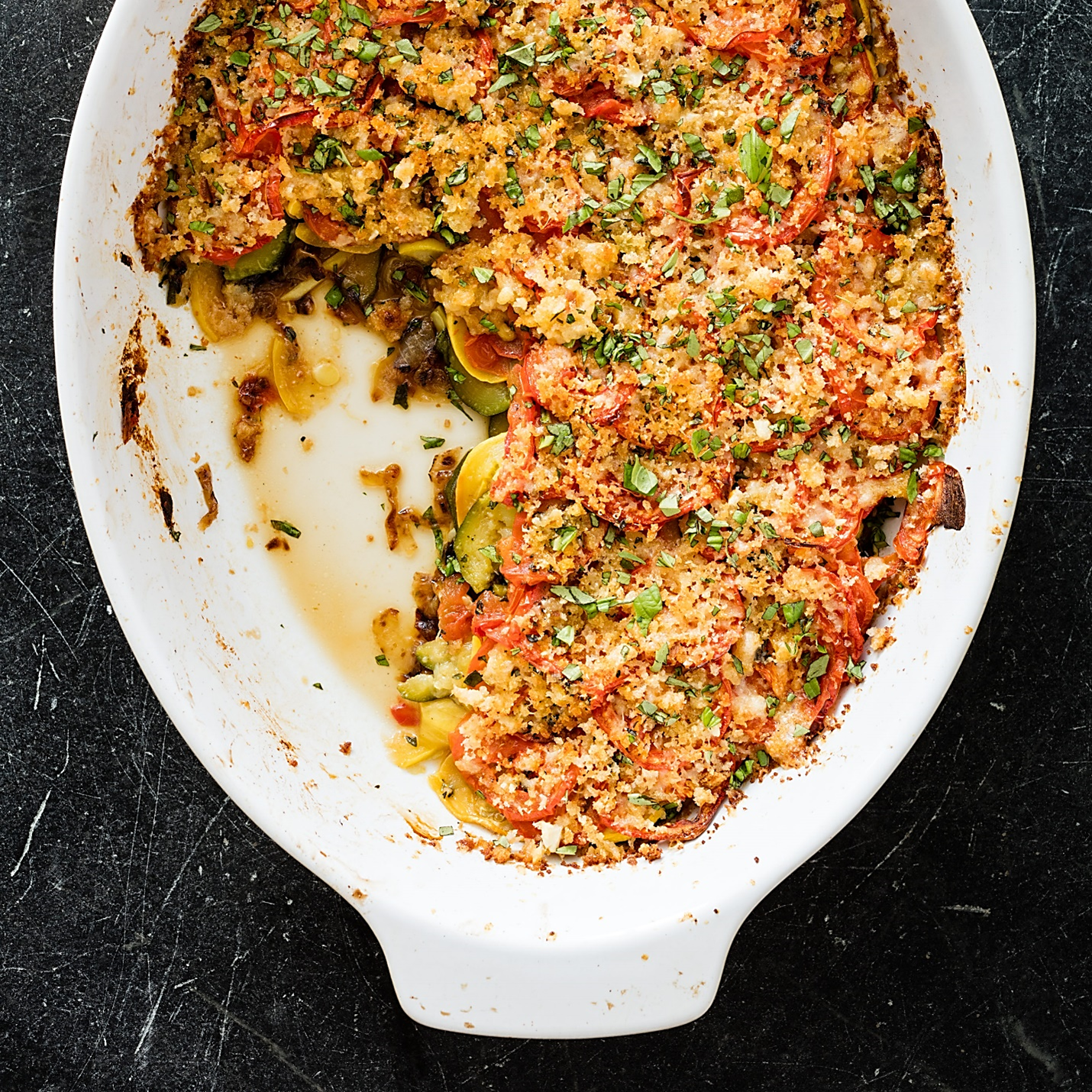
6 tablespoons extra virgin olive oil
1 pound zucchini ends trimmed and sliced crosswise into 1/4-inch-thick slices
1 pound summer squash (yellow), ends trimmed and sliced crosswise into 1/4-inch-thick slices
2 teaspoons salt
1 1/2 pounds ripe tomatoes (3 to 4 large), sliced 1/4 inch thick
2 medium onions halved lengthwise and sliced thin pole to pole (about 3 cups)
3/4 teaspoon freshly ground black pepper
2 cloves garlic minced or pressed through garlic press (about 2 teaspoons)
1 tablespoon minced fresh thyme
1 slice (large) white sandwich bread torn into quarters
2 ounces Parmesan cheese grated (about 1 cup)
2 medium shallots minced (about 1/4 cup)
1/4 cup chopped fresh basil
Directions:
Add Recipe to Cook'n
The juiciness of a ripe summer tomato is part of its glory—and also its bane. These juices can flood a dish, ruining texture. That's why many recipes try to cut back on liquid by removing the tomato’s gel (seeds suspended in it).

There’s just one problem: When you scoop out the gel, you're tossing the most flavorful part of your perfect tomato in the trash.
Tomato gel tastes so good because it’s packed with acids, sugars, and amino acids. Most importantly, the substance actually contains three times the amount of flavor-enhancing glutamic acid as does the fruit’s flesh. Glutamic acid is the compound responsible for the savory quality known as umami. When these glutamates are removed from the tomato, the fruit tastes flatter and less dynamic.

Alyssa explained that to get a better understanding of tomato gel’s impact on flavor, the researchers at America’s Test Kitchen set up a quick experiment. They prepared two summer vegetable gratins, one with intact tomatoes and another with tomatoes from which the seeds and gel had been removed.
She says the results were clear: The gratin with the intact tomatoes had a decidedly richer, deeper flavor than its stripped-down counterpart.
And for peak tomato flavor in tomato sauce, keep the skin also. Even though many recipes for homemade tomato sauce call for removing the fruit’s skins (for a smoother consistency), include it anyway. The Test Kitchen researchers found that keeping the skins, in conjunction with preserving the gel, made a significant difference, delivering fresh tomato sauce with an optimal balance of bright, savory-sweet flavors.

Eliminating the skins, on the other hand, led to a sauce so sweet and one dimensional that tasters likened it to “tomato candy.” That’s because the skins are full of aromatic compounds that lend complexity. (The seeds didn’t contribute any noticeable flavor, but their texture was distracting, so they were strained them out.)
To sum up, here’s a breakdown of the dominant flavor and aroma compounds in tomato flesh, skins, and gel:

Of course, it’s not always possible to retain all of the elements of the tomato—but if your recipe can work with the extra texture and moisture the skin and gel provide, by all means, skip the extra prep step keep them in.
And if you do have to excavate that gel (to ensure the crust on your upside-down tomato tart is crisp, for example), don’t toss it: It makes for a delicious summery snack spooned over crusty bread and sprinkled with sea salt.
I’ll close with a favorite recipe from COOK’S ILLUSTRATED for a scrumptious recipe that uses all the wonderful fresh produce we can get this time of year.

Summer Vegetable Gratin
Ingredients:
6 tablespoons extra virgin olive oil
1 pound zucchini ends trimmed and sliced crosswise into 1/4-inch-thick slices
1 pound summer squash (yellow), ends trimmed and sliced crosswise into 1/4-inch-thick slices
2 teaspoons salt
1 1/2 pounds ripe tomatoes (3 to 4 large), sliced 1/4 inch thick
2 medium onions halved lengthwise and sliced thin pole to pole (about 3 cups)
3/4 teaspoon freshly ground black pepper
2 cloves garlic minced or pressed through garlic press (about 2 teaspoons)
1 tablespoon minced fresh thyme
1 slice (large) white sandwich bread torn into quarters
2 ounces Parmesan cheese grated (about 1 cup)
2 medium shallots minced (about 1/4 cup)
1/4 cup chopped fresh basil
Directions:
1. Adjust oven rack to upper-middle position and heat oven to 400 degrees. Brush 13- by 9-inch baking dish with 1 tablespoon oil; set aside.
2. Toss zucchini and summer squash slices with 1 teaspoon salt in large bowl; transfer to colander set over bowl. Let stand until zucchini and squash release at least 3 tablespoons of liquid, about 45 minutes. Arrange slices on triple layer paper towels; cover with another triple layer paper towels. Firmly press each slice to remove as much liquid as possible.
3. Place tomato slices in single layer on double layer paper towels and sprinkle evenly with 1/2 teaspoon salt; let stand 30 minutes. Place second double layer paper towels on top of tomatoes and press firmly to dry tomatoes.
4. Meanwhile, heat 1 tablespoon oil in 12-inch nonstick skillet over medium heat until shimmering. Add onions, remaining 1/2 teaspoon salt, and 1/4 teaspoon pepper; cook, stirring occasionally, until onions are softened and dark golden brown, 20 to 25 minutes. Set onions aside.
5. Combine garlic, 3 tablespoons oil, remaining 1/2 teaspoon pepper, and thyme in small bowl. In large bowl, toss zucchini and summer squash in half of oil mixture, then arrange in greased baking dish. Arrange caramelized onions in even layer over squash. Slightly overlap tomato slices in single layer on top of onions. Spoon remaining garlic-oil mixture evenly over tomatoes. Bake until vegetables are tender and tomatoes are starting to brown on edges, 40 to 45 minutes.
6. Meanwhile, process bread in food processor until finely ground, about 10 seconds. (You should have about 1 cup crumbs.) Combine bread crumbs, remaining tablespoon oil, Parmesan, and shallots in medium bowl. Remove baking dish from oven and increase heat to 450 degrees. Sprinkle bread-crumb mixture evenly on top of tomatoes. Bake gratin until bubbling and cheese is lightly browned, 5 to 10 minutes. Sprinkle with basil and let sit at room temperature 10 minutes before serving.
2. Toss zucchini and summer squash slices with 1 teaspoon salt in large bowl; transfer to colander set over bowl. Let stand until zucchini and squash release at least 3 tablespoons of liquid, about 45 minutes. Arrange slices on triple layer paper towels; cover with another triple layer paper towels. Firmly press each slice to remove as much liquid as possible.
3. Place tomato slices in single layer on double layer paper towels and sprinkle evenly with 1/2 teaspoon salt; let stand 30 minutes. Place second double layer paper towels on top of tomatoes and press firmly to dry tomatoes.
4. Meanwhile, heat 1 tablespoon oil in 12-inch nonstick skillet over medium heat until shimmering. Add onions, remaining 1/2 teaspoon salt, and 1/4 teaspoon pepper; cook, stirring occasionally, until onions are softened and dark golden brown, 20 to 25 minutes. Set onions aside.
5. Combine garlic, 3 tablespoons oil, remaining 1/2 teaspoon pepper, and thyme in small bowl. In large bowl, toss zucchini and summer squash in half of oil mixture, then arrange in greased baking dish. Arrange caramelized onions in even layer over squash. Slightly overlap tomato slices in single layer on top of onions. Spoon remaining garlic-oil mixture evenly over tomatoes. Bake until vegetables are tender and tomatoes are starting to brown on edges, 40 to 45 minutes.
6. Meanwhile, process bread in food processor until finely ground, about 10 seconds. (You should have about 1 cup crumbs.) Combine bread crumbs, remaining tablespoon oil, Parmesan, and shallots in medium bowl. Remove baking dish from oven and increase heat to 450 degrees. Sprinkle bread-crumb mixture evenly on top of tomatoes. Bake gratin until bubbling and cheese is lightly browned, 5 to 10 minutes. Sprinkle with basil and let sit at room temperature 10 minutes before serving.
Recipe formatted with the Cook'n Recipe Software from DVO Enterprises.
 Alice Osborne
Alice Osborne
Weekly Newsletter Contributor since 2006
Email the author! alice@dvo.com
